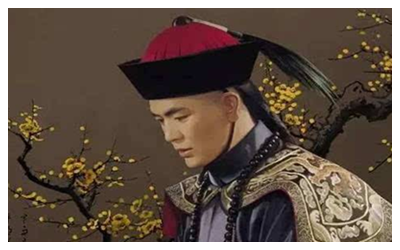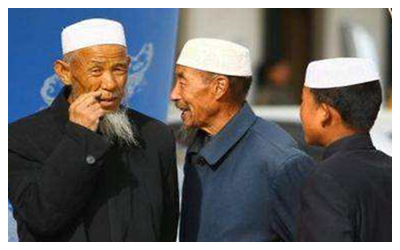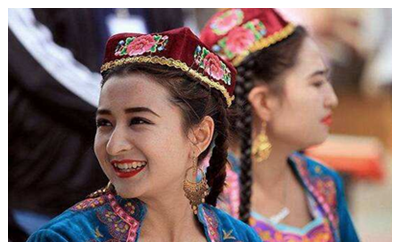- Home
- Travel In China > China Culture > Chinese Clothing >
Chinese Caps
The code of wearing caps is an important part in China's costume code. In China, when a man reached the age of 20, he began to wear cap, and on that occasion there was a ceremony called "Guanli (Ceremony of the Cap)", indicating that he had grown up.
History of Chines Caps
Cap was invented long ago in China. For example, in Chinese idioms, there are "Yi Guan Chu Chu" (neatly dressed both in clothes and in cap), and "Guan Mian Tang Huang (elegant and stately in dressing)", and so on. The "Guan" and "Mian" here refer to cap.
The cap in ancient China was not the same as the present-day one. It had only a narrow ridge covering only part of the calvaria, not like today's cap that covers the whole head.
After the cap came into being, hierachical rule in terms of social status was applied to it: a poor person with a low social status was not allowed to wear a cap. The rule on cap wearing was different from dynasty to dynasty.
In the Han Dynasty (206BC-220AD), the shape of the cap was already similar to that of today. Cap must be matched with a headband. A lowly person could only wear a headband, and a minor was only allowed to wear a hollow headband. The influence of such a rule lasted until the Ming Dynasty (1368-1644).
In the Ming Dynasty, the Wushamao (black gauze cap) appeared in the official uniform. "Mian" appeared earlier than "Guan", and generally refers to "Mian" (crown) specially used by the king. Only when the son of the emperor succeeded to the throne could he be coronated (Jiamian, in Chinese, meaning offering the crown). Laborers could only wear headband, mostly for wiping off the sweat, and later it served as a cap.
Chinese caps have their own national features. In ancient times, people of the Liao (916-1125) and Jin (1115-1234) Dynasties usually wore fur caps, and people of the Yuan Dynasty (1271-1368) usually wore helmet-style caps and hats. Moreover, there were little colorful cap of the Uygur, felt cap of the Tu, fox fur cap of the Mongolian, and so on. In daily life, cap (hat) has also such functions as cold protection, warm keeping, and decoration.
 Cap in the Qing Dynasty
After Ming Dynasty, the Qing Dynasty was founded in 1645 and united China. Dingdai Hualing was a kind of hat used to indicate one's official rank in the Qing Dynasty. Dingdai, commonly called "Dingzi", was decorated with colorful gemstones and gold to show the official rank, and on it were some inserted plumes, hence the name "Dingdai Hualing". Such a convention of adornment was a relic of the ancient custom of wearing stones and plumes of the Nuchu people (ancestors of the Manchu).
Cap in the Qing Dynasty
After Ming Dynasty, the Qing Dynasty was founded in 1645 and united China. Dingdai Hualing was a kind of hat used to indicate one's official rank in the Qing Dynasty. Dingdai, commonly called "Dingzi", was decorated with colorful gemstones and gold to show the official rank, and on it were some inserted plumes, hence the name "Dingdai Hualing". Such a convention of adornment was a relic of the ancient custom of wearing stones and plumes of the Nuchu people (ancestors of the Manchu).
Caps of Chinese ethnic minority
 White Cap of Hui
White Cap of Hui
Costume of the Hui ethnic minority distinguishes itself from others chiefly by the head part. In areas inhabited by the Hui people, men usually wear a round brimless white cap.
According to some scholars, it is for the convenience of kowtow that Islamite wears the brimless white cap: to let the forehead and the nose tip touch the ground easily, so as to make body and soul concentrate on one point. As the book Origin of the Hui says: "When you kowtow, your soul returns to the Earth." While kowtowing, the Huis realize that people live on the earth and will die on the earth, too, which is a law no one can defy; Allah bestow us life, so we should requite Him.

Colorful Cap of Uygur
Colorful cap is part of the Uygur ethnic minority's habiliment, and also one of the symbols of the minority. As early as the Tang Dynasty (618-907), most males of the Western Regions wore a pointed-topped felt hat with a turnup edge, quite similar to the present-day "Sipianwa". By the Ming Dynasty (1368-1644), owing to the influence of Arabian and Central Asian culture, men of the Uygur ethnic minority had begun to shave their heads and wear small embroidered caps. In the beginning period of the Qing Dynasty (1644-1911), the colorful cap of the minority developed further in material and design. Leather was used in winter and damask silk in summer, with fowl feather inserted at the front. All caps for female were decorated with purl embroidery.

 Cap in the Qing Dynasty
Cap in the Qing Dynasty White Cap of Hui
White Cap of Hui
 Ask Questions ?
Ask Questions ?